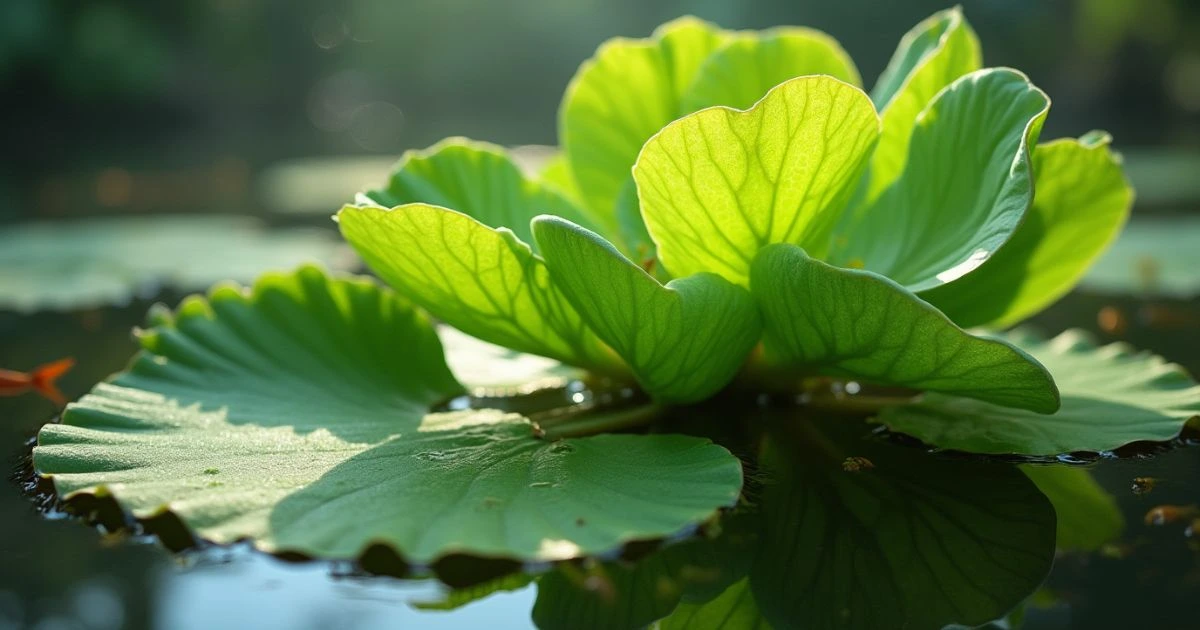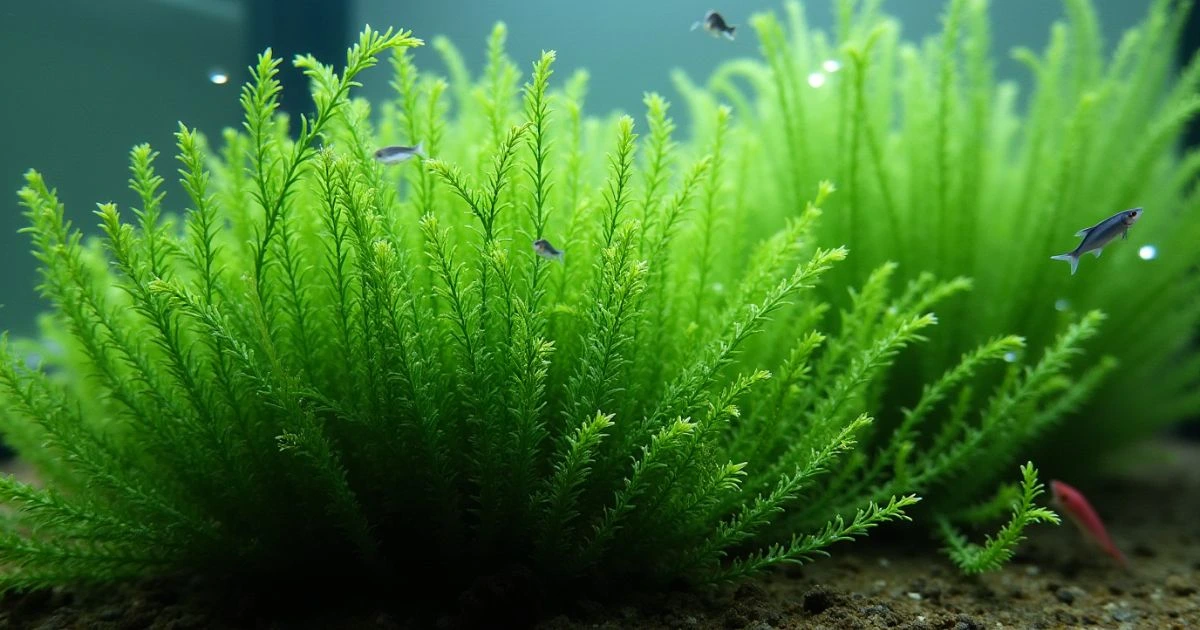Imagine this: a stunning aquarium filled with lush greenery floating serenely on the water’s surface. Aquarium floater plants can turn a standard fish tank into a vibrant aquascape, boosting not only the aesthetics but also the health of your aquatic environment. Whether you’re new to the aquarium world or just looking to enhance your setup, floating plants are an easy, beautiful way to elevate your space. In this guide, you’ll discover ten of the best floating aquarium plants for beginners, along with essential tips for caring for each.
Table of Contents
Why Choose Aquarium Floater Plants?
Aquarium floater plants offer a host of benefits beyond just aesthetics. From improving water quality to creating shelter for fish, here’s why you should consider adding them to your aquarium.
Benefits of Floater Plants
Floating plants are a great addition to any tank, especially for beginners. Here are some reasons they’re a smart choice:
- Water Quality Improvement: Floater plants help to absorb excess nutrients in the water, preventing algae growth and improving overall water quality. By keeping the water clean, these plants create a healthy environment for your fish and other aquatic life.
- Aesthetic Appeal: With their lush green foliage, these plants add a natural look to your aquarium, making it feel like a serene aquatic garden.
- Fish Comfort: Floating plants provide shade and shelter for fish, particularly smaller or more shy species. By offering hiding spots, they can make your aquarium a safer, more comfortable place for your fish to thrive.
Perfect for Beginners
If you’re new to aquariums, floating plants offer an ideal, low-maintenance choice. They grow quickly, require minimal care, and are highly adaptable, making them perfect for beginners who want to enhance their tank’s visual appeal and ecosystem without much effort.
Top 10 Aquarium Floater Plants for Beginners
Dive into these top beginner-friendly floater plants to find the best fit for your tank:
1. Water Spangles (Salvinia Minima)

Water Spangles is an easy-to-care-for floater plant, ideal for creating a cozy canopy for your fish.
- Description: Small, oval leaves that float effortlessly on water.
- Care Needs: Moderate lighting is enough, though it prefers still water.
- Lighting Requirement for Water Spangle: This plant thrives in low to moderate light conditions, making it a great choice for a beginner’s aquarium.
- Quick Tips: Known for its fast growth rate, this plant can quickly cover the tank surface if not trimmed.
2. Duckweed (Lemna Minor)

Duckweed is a favorite among beginners for its simple beauty and functionality.
- Description: Tiny, bright green leaves that multiply rapidly.
- Care Needs: Thrives in low to medium lighting.
- Quick Tips: Effective for nutrient absorption, Duckweed prevents algae growth and maintains water quality.
3. Amazon Frogbit (Limnobium Laevigatum)

Amazon Frogbit is a popular choice for aquariums due to its unique appearance and ease of care.
- Description: Large, rounded leaves that float with trailing roots.
- Care Needs: Prefers low to moderate light; avoid strong currents.
- Quick Tips: Frogbit’s long roots provide shelter for fish and make it a great option for larger tanks.
4. Water Lettuce (Pistia Stratiotes)

Water Lettuce is a wonderful floater plant that adds a touch of elegance to your aquarium.
- Description: Light green rosettes with fuzzy roots.
- Care Needs: Prefers moderate light and gentle water flow.
- Quick Tips: It’s an excellent plant for absorbing nutrients and preventing algae growth.
5. Azolla (Azolla Filiculoides)

Azolla is a tiny but fast-growing floater that can quickly cover the surface of your tank.
- Description: Small, feathery plants with red and green tones.
- Care Needs: Thrives in low to moderate lighting.
- Quick Tips: Azolla works well in ponds or small aquariums where it can grow rapidly.
6. Hornwort (Ceratophyllum Demersum)

Although Hornwort is technically a submerged plant, it works perfectly as a floater in aquariums.
- Description: Needle-like leaves that form dense, bushy clusters.
- Care Needs: Prefers moderate to high lighting and can tolerate a wide range of temperatures.
- Quick Tips: It’s an excellent oxygenator and can be left floating or anchored.
7. Salvinia (Salvinia Auriculata)

Salvinia is another excellent floater for beginners that is both decorative and functional.
- Description: Small, round leaves that float freely.
- Care Needs: Prefers moderate lighting and calm water conditions.
- Quick Tips: This plant grows quickly and can shade the water to reduce algae growth.
8. Water Hyacinth (Eichhornia Crassipes)

Water Hyacinth is a striking, fast-growing plant known for its large, glossy leaves.
- Description: Large, round leaves with purple flowers (in the right conditions).
- Care Needs: Requires full sunlight and a warm environment.
- Quick Tips: Due to its fast growth, it’s important to manage its spread, especially in large tanks.
9. Riccia Fluitans (Crystalwort)

Riccia Fluitans is a versatile and attractive floating plant with delicate, bright green leaves.
- Description: Moss-like clusters that float on the water’s surface.
- Care Needs: It thrives under moderate to high lighting with moderate current.
- Quick Tips: Regular trimming will help keep this plant manageable.
10. Floating Leaved Water Lily (Nymphaea)

Water lilies are a great choice for large aquariums or ponds, adding a touch of elegance.
- Description: Large, round leaves that float beautifully on the surface.
- Care Needs: Requires bright lighting and a deep tank or pond.
- Quick Tips: A slow-growing plant that offers shade and beauty for your aquatic landscape.
How to Care for Aquarium Floater Plants
Once you’ve chosen your plants, knowing how to care for them will ensure they thrive. Let’s explore the basic needs for maintaining healthy aquarium floating plants.
Lighting Requirements for Aquarium Floater Plants
Most floater plants need moderate lighting, about 8-12 hours per day, to thrive. Avoid intense light, as it can cause plant “burnout” and promote algae growth. For best results, adjust your aquarium lights to provide softer, indirect light.
- Lighting Requirement for Water Spangle: Water Spangle prefers moderate lighting, so it’s essential to avoid bright, direct light that could damage its delicate leaves.
- Pro Tip: If your tank has very strong lighting, consider adjusting it to a softer setting or using a dimmer, as too much light can lead to excess algae growth.
Water Quality and Nutrient Needs
Floating plants play a crucial role in maintaining the water quality of your aquarium by absorbing excess nutrients. They help maintain a balanced ecosystem by keeping nutrient levels in check and preventing algae blooms.
- Nutrients Needed: They require nitrogen, phosphorus, and potassium for optimal growth.
- Table of Recommended Nutrient Levels:
| Nutrient | Ideal Level (ppm) |
| Nitrogen | 10-20 |
| Phosphorus | 0.5-1 |
| Potassium | 15-30 |
Trimming and Maintenance
Since floating plants grow rapidly, periodic trimming is essential to prevent overgrowth and to ensure that light reaches the plants and fish below. Regularly remove any decaying leaves to prevent them from affecting the water quality.
Common Issues with Floater Plants and Solutions
Even with their low maintenance, floater plants may present some challenges. Here’s how to handle them:
Algae Control
While floating plants help to reduce algae by absorbing excess nutrients, some tanks may still experience algae blooms. Regular maintenance, such as cleaning the tank and adjusting light exposure, helps keep algae at bay.
- Tip: Consider introducing algae-eating fish like Siamese algae eaters or snails to naturally help control algae growth.
Managing Overgrowth
Floater plants can quickly spread, covering the entire tank surface. To manage this, gently scoop out some plants during weekly tank cleanings to ensure that light can reach the other plants and fish in the tank.
Nutrient Deficiency
If you notice yellowing leaves or slow growth, your plants might need more nutrients. Adding a liquid aquarium fertilizer can provide the necessary elements for healthy growth.
FAQ About Aquarium Floater Plants
- Do floater plants need CO₂ injections?
- Most floater plants don’t require CO₂ injections to thrive, especially the ones recommended for beginners. However, adding CO₂ can encourage faster growth for some species.
- Can floater plants survive with minimal light?
- Yes, many floater plants can adapt to lower light levels, but their growth rates may be slower. Be sure to monitor their health and adjust lighting if necessary.
- How do I keep floater plants from blocking light for other plants?
- Regular trimming will help keep your floater plants from overtaking your aquarium. You can also position them near the back or side of your tank to prevent them from shading other plants.
Conclusion
Aquarium floater plants offer a simple yet beautiful way to enhance the look and health of your tank. From providing shade to improving water quality, these plants are both functional and decorative. Whether you’re looking for easy floating aquarium plants like Duckweed or the best floating aquarium plants for nutrient control, you have plenty of choices. By selecting the right plants and caring for them properly, you’ll create a thriving aquatic ecosystem. Start with these 10 amazing floating plants today, and transform your aquarium into a vibrant, lush environment.



3 thoughts on “Aquarium Floater Plants: 10 Amazing Choices for Beginners”